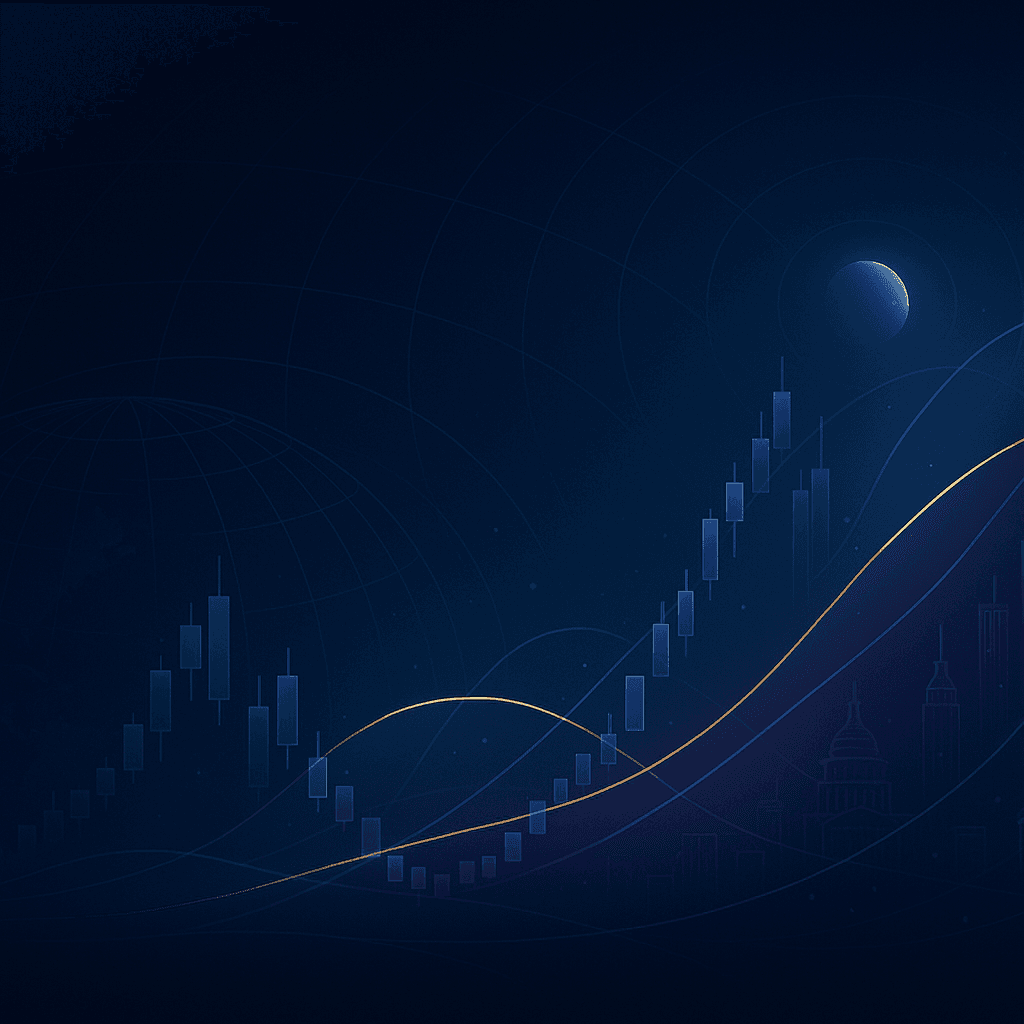
Trade What Moves the World — Smarter Index Decisions
From S&P 500 and Nasdaq to DAX, CAC 40, Nikkei 225, Hang Seng, NIFTY 50, Sensex, and Russell 2000 — learn how indices work, why timing matters, and how to frame entries with structure and planetary windows.
What is Index Trading?
Index trading expresses a view on a rules-based basket of representative stocks — a benchmark for a market or theme. It captures macro trends without stock-picking and is accessible via futures, options, or ETFs.
- US large-cap: S&P 500.
- Tech-tilted breadth: Nasdaq Composite.
- Blue-chip baskets: DAX (Germany), CAC 40 (France), Nikkei 225 (Japan).
- Asia EM: Hang Seng (Hong Kong), NIFTY 50 / Sensex (India).
- Small-cap proxy: Russell 2000.
Why Timing Matters
Indices react to policy, inflation, growth, and flows. Tactical timing helps you:
- Enter near support during favorable windows.
- Sidestep event-driven whipsaws and gaps.
- Manage drawdowns with hedges or cash.
We combine technical structure (trend, breadth, levels) with planetary windows. When they align, conviction and clarity improve.
Session Overlap (Illustrative)
Approximate trading day progression (local DST varies). Use for attention planning.
Regime Mix (Sample)
A quick visual to reason about environment: Range / Trend / Event-Vol.
- Range
- Trend
- Event-Vol
Tilt tactics to prevailing mix; avoid one-size-fits-all entries.
Mini Trends (Illustrative)
Three tiny curves to convey different “feel” (not signals).
Purpose: quick visual intuition; use full charts for decisions.
Global Indices We Cover
S&P 500 (SPX500)
Large-cap US benchmark with broad institutional attention.
Nasdaq Composite
Tech-tilted breadth; powerful trends in up-cycles.
Dow Jones Industrial Average
US blue-chip bellwether; sector rotation lens.
DAX / CAC 40
EU blue-chips; watch policy and FX sensitivity.
Nikkei 225 / Hang Seng
Asia majors; currency, policy and flows matter.
NIFTY 50 / Sensex
India large-caps; liquidity & earnings growth lens.